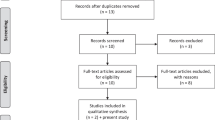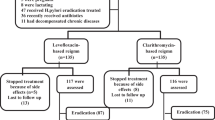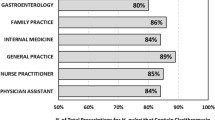Abstract
Mutations in the gene encoding the CYP2C-19 enzyme for PPI metabolism have been shown to enhance the chance for a cure in a H. pylori-positive patients using a two-week dual-therapy regimen involving omeprazole and amoxicillin. However, the impact of CYP2C-19 genetic polymorphism on eradication rates of a one-week triple-therapy regimen has not been examined. In this cohort study, 156 H. pylori-positive peptic ulcer or NUD patients who presented to our university hospital were recruited. They were treated by one-week omeprazole–amoxicillin–clarithromycin therapy. Host and bacterial predictive factors including H. pylori susceptibility and CYP2C-19 genotyping, as well as cure rate for H. pylori infection, were studied. Cure rate was 85.9% (95% CI: 79–91%) on an intent to treat (ITT) basis. By multiple logistic regression analysis, only clarithromycin resistance had a significant impact on treatment success (odds ratio 28.7: 95% CI: 6–172). CYP2C-19 genetic polymorphism was not associated with a significant change in cure rate. These observations indicate only clarithromycin susceptibility, not CYP2C-19 polymorphism, has a major impact on the treatment success when using a seven-day OAC H. pylori treatment regimen.
Similar content being viewed by others
REFERENCES
Hoshiya S, Watanabe K, Tokunaga K, et al: Relationship between eradication therapy and clarithromycin-resistant Helicobacter pylori in Japan. J Gastroenterol 35:10–14, 2000
Kamada T, Haruma K, Komoto K, et al: Effect of smoking and histological gastritis severity on the rate of H. pylori eradication with omeprazole, amoxicillin, and clarithromycin. Helicobacter 4:204–210, 1999
Huang JQ, Hunt RH. Are one-week anti-H. pylori treatments more effective an patients with peptic ulcer disease (PUD) than in those with non-ulcer dyspepsia (NUD)? Am J Gatroenterol 93:A1639, 1998
Moshkowitz M, Konikoff FM, Peled Y, et al: High Helicobacter pylori numbers are associated with low eradication rate after triple therapy. Gut 36:845–847, 1995
Suzuki M, Kitahora T, Nagahashi S, et al: Gastric urease activity is inversely associated with the success of treatment for Helicobacter pylori: Effect of sofalcone. J Clin Gastroenterol 27(suppl 1):S183–S186, 1998
Sheu BS, Yang HB, Su IJ, et al: Bacterial density of Helicobacter pylori predicts the success of triple therapy in bleeding duodenal ulcer. Gastrointest Endosc 44:683–688, 1996
Moayyedi P, Chalmers DM, Axon AT: Patient factors that predict failure of omeprazole, clarithromycin, and tinidazole to eradicate Helicobacter pylori. J Gastroenterol 32:24–27, 1997
Fallone CA, Loo V, Joseph L, et al: Predictors of failure of Helicobacter pylori eradication and predictors of ulcer recurrence: A randomized controlled trial. Clin Invest Med 22:185–194, 1999
Fujioka T: Clarithromycin resistance in Helicobacter pylori: Implication for therapy. J Gastroenterol 35:69–70, 2000
Lind T, Megraud F, Unge P, et al: The MACH2 study: Role of omeprazole in eradication of Helicobacter pylori with 1-week triple therapies. Gastroenterology 116:248–253, 1999
Miyaji H, Ito S, Azuma T, et al: The prevalence of the drug resistance in Helicobacter pylori and the effects of the resistance on the eradication therapy in Japan. Gastroenterology 112:A222, 1997
Tompkins DS, Perkin J, Smith C. Failed treatment of Helicobacter pylori infection associated with resistance to clarithromycin. Helicobacter 2:185–187, 1997
Peterson WL, Graham DY, Marshall B, et al: Clarithromycin as monotherapy for eradication of Helicobacter pylori: A randomized, double-blind trial. Am J Gastroenterol 88:1860–1864, 1993
Logan RP, Gummett PA, Schaufelberger HD, et al: Eradication of Helicobacter pylori with clarithromycin and omeprazole. Gut 35:323–326, 1994
Vincent P, Michaud L, Martin de Lasalle E, et al: 13C-urea breath test and gastric mucosal colonization by Helicobacter pylori in children: Quantitative relation and usefulness for diagnosis of infection. Helicobacter 4:233–237, 1999
Furuta T, Ohashi K, Kamata T, et al: Effect of genetic differences in omeprazole metabolism on cure rates for Helicobacter pylori infection and peptic ulcer. Ann Intern Med 129:1027–1030, 1998
Pounder RE: New developments in Helicobacter pylori eradication therapy. Scand J Gastroenterol (suppl 223):S43–S45, 1997
Unge P. What other regimens are under investigation to treat Helicobacter pylori infection? Gastroenterology 113:S131–S148, 1997
Kubota T, Chiba K, Ishizaki T: Genotyping of S-mephenytoin 4_-hydroxylation in an extended Japanese population. Clin Pharmacol Ther 60:661–666, 1996
De Morais SM, Wilkinson GR, Blaisdell J, et al: The major genetic defect responsible for the polymorphism of Smephenytoin metabolism in humans. J Biol Chem 269:15419–15422, 1994
De Morais SM, Wilkinson GR, Blaisdell J, et al: Identification of a new genetic defect responsible for the polymorphism of (S)-mephenytoin metabolism in Japanese. Mol Pharmacol 46:594–598, 1994
Miwa H, Murai T, Ohkura R, et al: Effect of fasting subjects' posture in 13C urea breath test for detection of Helicobacter pylori infection withy fasting subjects. Helicobacter 2:82–85, 1997
Miwa H, Murai T, Ohkura R, et al: Usefulness of 13C urea breath test for detection of H. pylori infection in fasting patients. J Gastroenterol Hepatol 13(10):1039–1043, 1998
Miwa H, Nagahara A, Sato K, et al: Efficacy of 1 week PPI/AC therapy for H. pylori infection in the Japanese population. J Gastroenterol Hepatol 14:317–321, 1999
Miwa H, Ohkura R, Murai T, et al. Effectiveness of OAC therapy for H. pylori infection in Japanese population, Helicobacter 3:132–138, 1998
Miwa H, Ohkura R, Murai T, et al: Impact of rabeprazole, a new proton pump inhibitor, in PPI/AC therapy for Helicobacter pylori infection-comparison with omeprazole and lansoprazole. Aliment Pharmacol Ther 13:741–746, 1999
Graham DY, Lew GM, Malaty HM, et al: Factors influencing the eradication of Helicobacter pylori with triple therapy. Gastroenterology 102:493–496, 1992
Ieiri I, Kubota T, Urae A, et al: Pharmacokinetics of omeprazole (a substrate of CYP2C19) and comparison with two mutant alleles, C gamma P2C19m1 in exon 5 and C gamma P2C19m2 in exon 4, in Japanese subjects. Clin Pharmacol Ther 59:647–653, 1996
Peterson WL: The role of antisecretory drugs in the treatment of Helicobacter infection. Aliment Pharmacol Ther 11 (suppl): S21–S25, 1997
Mirshahi F, Fowler G, Patel A, et al: Omeprazole may exert both a bacteriostatic and a bacteriocidal effect on the growth of Helicobacter pylori (NCTC 11637) in vitro by inhibiting bacterial urease activity. J Clin Pathol 51:220–224, 1998
Miwa H, Murai T, Sato K, et al: Comparison of the efficacy of 400 mg and 800 mg of clarithromycin used with lansoprazole and amoxicillin in eradication regimens for H. pylori infection in Japanese population. J Gastroenterol 35:536–539, 2000
Chiba K, Kusaka M, Ishibashi T, et al: Interethnic differences in genetic polymorphism of mephenytoin hydroxylation among four oriental populations. Jpn J Pharmacol 58:78, 1992
Jurima M, Inaba T, Kadar D, et al: Genetic polymorphism of mephenyton p(4)-hydroxylation: Difference between orientals and Caucasians. Br J Clin Pharmacol 19:483–487, 1985
Author information
Authors and Affiliations
Rights and permissions
About this article
Cite this article
Miwa, H., Misawa, H., Yamada, T. et al. Clarithromycin Resistance, but Not CYP2C-19 Polymorphism, Has a Major Impact on Treatment Success in 7-Day Treatment Regimen for Cure of H. pylori Infection: A Multiple Logistic Regression Analysis. Dig Dis Sci 46, 2445–2450 (2001). https://doi.org/10.1023/A:1012371702918
Issue Date:
DOI: https://doi.org/10.1023/A:1012371702918




